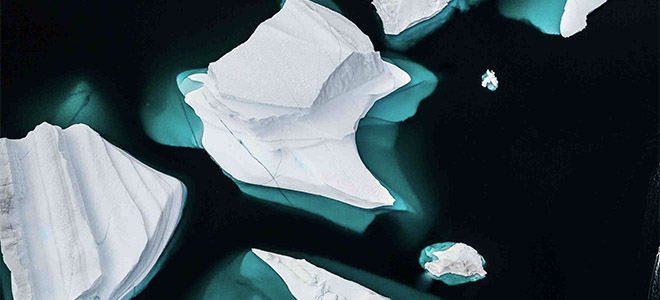
Undark Magazine
by Michaela Cavanagh
As climate change marches forward, it will exact a mounting, tangible toll on our collective mental health and productivity.
WHEN I CALLED COURTNEY HOWARD, one of the authors of the recent Lancet Countdown 2018 Report on health and climate change, she was Christmas shopping during a pit stop in London on her way to the 24th United Nations Climate Change Conference in Katowice, Poland.
As she picked out ballet shoes for one of her young daughters, we discussed her work on the mental health impacts of climate change. She recounted to me the moment in her own life when climate change’s bottom line really sunk in. She was at home with her daughter doing some mental math: Yellowknife, the capital of Canada’s Northwest Territories, where she lives, was already 2.5 degrees Celsius warmer than it was in the 1940s, and the Intergovernmental Panel on Climate Change (IPCC) had recently reported that average global temperatures were on pace to warm another half degree or more by 2052. The warming would be irreversible in little more than a decade — well within the lifetime of her children. She wound up on the floor, wrapped around her daughter in the fetal position.
The impact of climate change on our physical world has by now been made clear and manifest to anyone paying attention: Rising sea levels and increasing temperatures have begotten wildfires, drought, tsunamis and heat waves, which have wrought unprecedented devastation. The impact of climate change on our internal worlds, though, has gone relatively unstudied. But a growing body of evidence demonstrates that climate change and its effects are linked to elevated rates of depression, anxiety, suicidal ideation, post-traumatic stress, and a host of negative emotions including anger, hopelessness, despair, and a feeling of loss. Researchers have dubbed these feelings “ecological grief.”
In a briefing for Canadian policymakers released in conjunction with the Lancet Countdown, Howard and her colleagues honed in on ecological grief, eco-anxiety, and something called solastalgia — a form of homesickness one experiences while still at home. Grief and mourning are natural responses to the scale of ecological loss we’re living through. Research shows that the sixth mass extinction is underway, and the World Health Organization named climate change the single greatest threat to global health this century.
Ecological grief is the grief that’s felt in response to experienced or anticipated ecological loss. It may arise due to acute environmental disasters. For example, one in six survivors of Hurricane Katrina met the criteria for post-traumatic stress disorder, and crop-damaging heat waves have been shown to lead to increased suicide rates in India. But grief can also stem from stress and anxiety associated with slow, creeping changes in one’s environment — feelings that many of us are experiencing as the winters become uncannily warmer and extreme weather events become more frequent.
Communities whose livelihoods and ways of living are inextricable from their natural environments, though, are on the frontlines of the crisis. In the Inuit communities of Nunatsiavut, located in the north of Canada’s most easterly province, Newfoundland and Labrador, temperatures are warming twice as fast as in the rest of the world. That has led to diminishing ice cover, shorter winters, and unpredictable weather. Like other public health challenges, the burden of climate change’s mental health impacts falls primarily on groups that are already vulnerable. The losses these communities suffer extend to every corner of their lives, and they’re unending, says Ashlee Cunsolo, the director of the Labrador Institute of Memorial University and another contributor to the recent Lancet report. The land — or ice — is literally shifting beneath their feet and before their eyes. The attendant grief these communities experience is similarly amorphous and ubiquitous.
The changing landscape brings food insecurity, post-traumatic stress disorder, population displacement, and trauma. There are no roads in or out of Nunatsiavut’s Rigolet, the southernmost Inuit community in Canada. The town is accessible by ice road, by plane, or — during the summer months — by ferry. In recent years, the ice has started to form a month later and melt a month earlier, says Derrick Pottle, a hunter and commercial trapper. And when there is no ice, community members have nowhere to go. Without the ice road, “you’re trapped — even if you wanted to get out you couldn’t.” For Pottle and the rest of the community, the sea and the land are “our highways, how we move around, how we get out to harvest, and how we connect to the land.” Read more …

